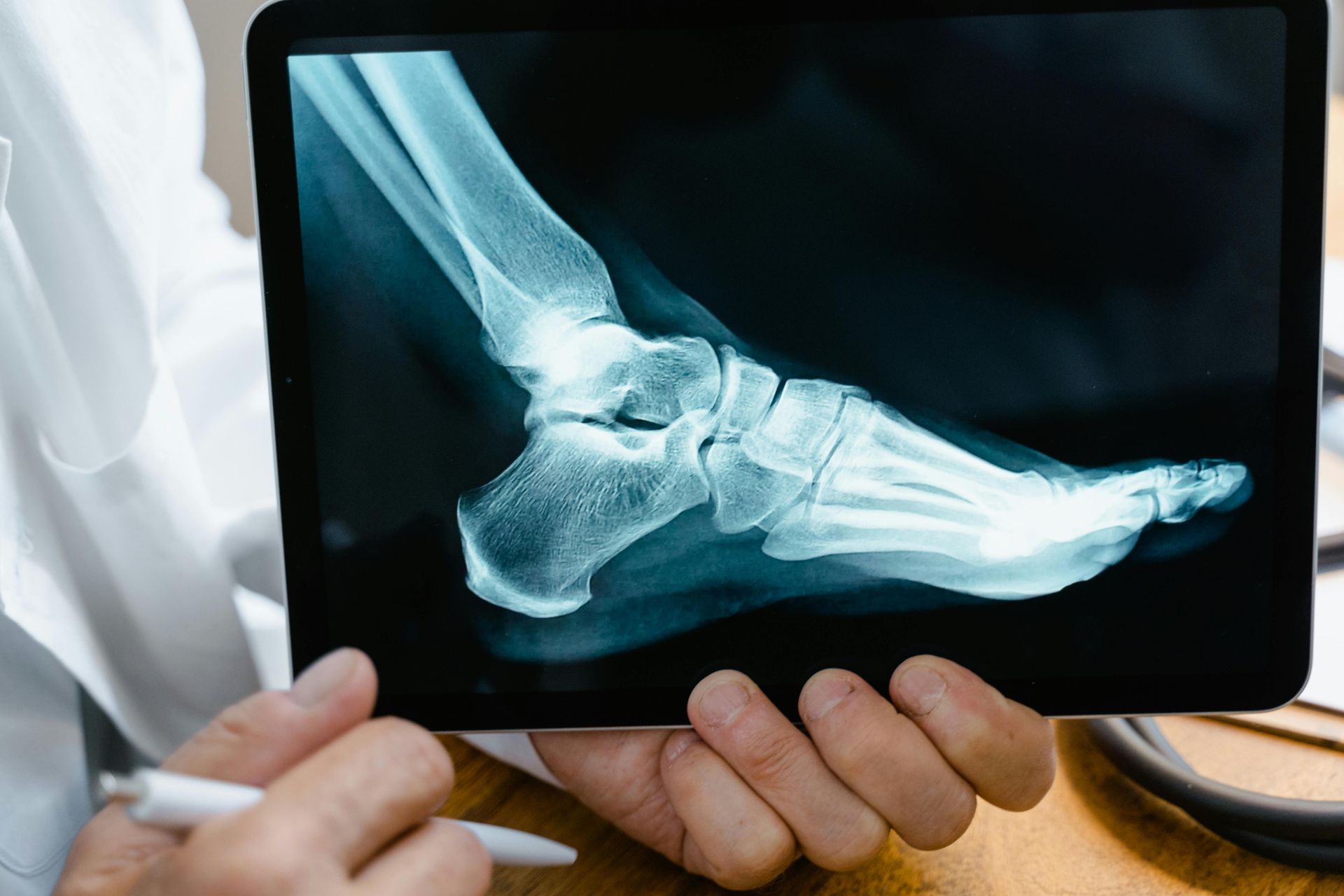Podiatry Doctor/Podiatrist in New Jersey, Pennsylvania, or Delaware
A podiatrist, also known as a podiatric physician or surgeon, is a doctor of podiatric medicine who specializes in diagnosing and treating conditions of the foot, ankle, and related structures of the leg.
As experts in their field, podiatrists are dedicated to providing comprehensive care to ensure the well-being and functionality of your feet. Whether you're experiencing foot pain, ankle injuries, or other foot-related issues, a podiatrist is trained to accurately diagnose and develop effective treatment plans tailored to your specific needs.
With a deep understanding of the complexities of the foot and ankle, podiatrists utilize advanced medical techniques and state-of-the-art technology to deliver high-quality care. From conservative treatments to surgical interventions, they employ a wide range of modalities to alleviate pain, correct deformities, and enhance mobility.
By consulting a podiatrist, you can take a proactive step towards addressing any concerns you may have about your foot health. Don't let foot problems hinder your daily activities or quality of life- reach out to a podiatrist today and put your feet in the hands of a skilled professional who will guide you towards optimal foot health.

What services does a podiatrist provide?
-
Minimally Invasive Bunion Surgery
Minimally invasive bunion surgery is an advanced procedure designed to correct bunions (hallux valgus) with smaller incisions and less disruption to surrounding tissues compared to traditional open surgery. Bunions, which appear as bony bumps on the side of the foot, can cause pain, swelling, and difficulty wearing shoes. Using specialized surgical tools and imaging guidance, podiatrists realign the bones of the foot, correct joint deformities, and reduce discomfort. This modern approach offers benefits such as minimal scarring, shorter recovery times, less post-operative pain, and an earlier return to normal activities. By addressing both the appearance and function of the foot, patients can enjoy lasting relief and improved mobility.
-
Heel Pain & Plantar Fasciitis
Heel pain is a common condition, with plantar fasciitis being one of the leading causes. This condition results from inflammation of the plantar fascia, the thick band of tissue that connects the heel to the toes, and is often triggered by overuse, improper footwear, or structural foot issues. Podiatrists perform thorough evaluations to diagnose the cause of heel pain and create individualized treatment plans. Non-invasive options such as custom orthotics, physical therapy, and shockwave therapy can effectively reduce inflammation and promote healing. In more persistent cases, minimally invasive procedures may be recommended to alleviate pain and restore full mobility. Early intervention can prevent worsening symptoms and improve overall foot health.
-
Foot and Ankle Trauma
Foot and ankle trauma encompasses a wide range of injuries, including fractures, sprains, ligament tears, and tendon damage caused by falls, sports activities, or accidents. Prompt and accurate diagnosis is essential to ensure proper healing and prevent long-term complications like chronic pain or instability. Podiatrists use advanced imaging, such as X-rays or MRIs, to assess the severity of the injury and create a personalized treatment plan. Depending on the injury, care may include casting, bracing, physical rehabilitation, or surgical repair for severe fractures or ligament damage. By focusing on both immediate recovery and long-term function, podiatrists help patients return to their normal activities safely and confidently.
-
Minimally Invasive Hammertoe Surgery
Hammertoes occur when one or more toes become bent or curled due to muscle imbalances, arthritis, or wearing tight-fitting shoes. If left untreated, hammertoes can lead to pain, corns, and difficulty walking. Minimally invasive hammertoe surgery is a modern solution that corrects toe deformities with small incisions, minimal tissue disruption, and faster recovery times compared to traditional surgery. Podiatrists carefully straighten and stabilize the affected toe using specialized tools, often allowing patients to walk shortly after the procedure. This approach reduces post-operative discomfort, limits scarring, and helps patients achieve better foot function and comfort.
